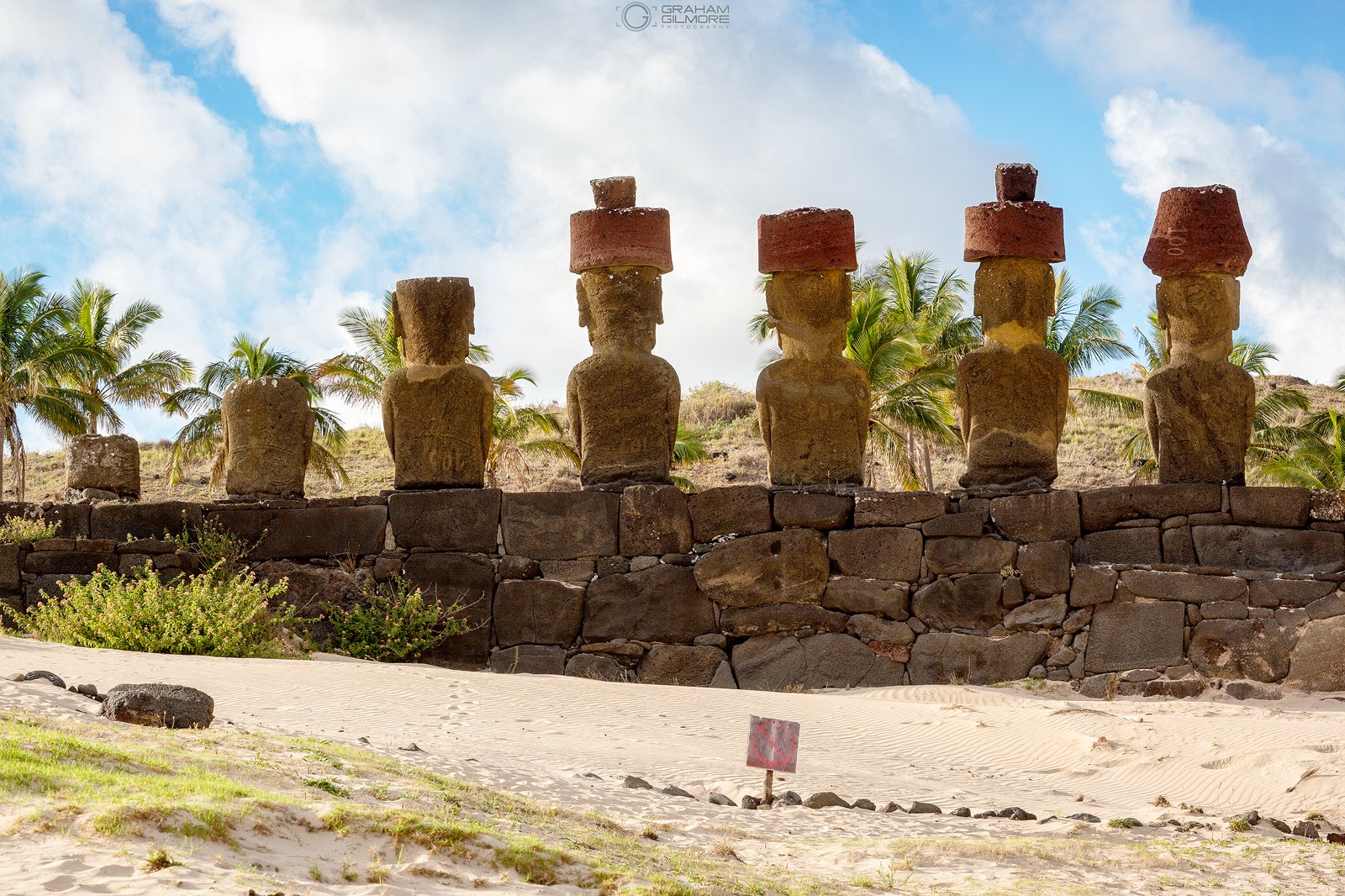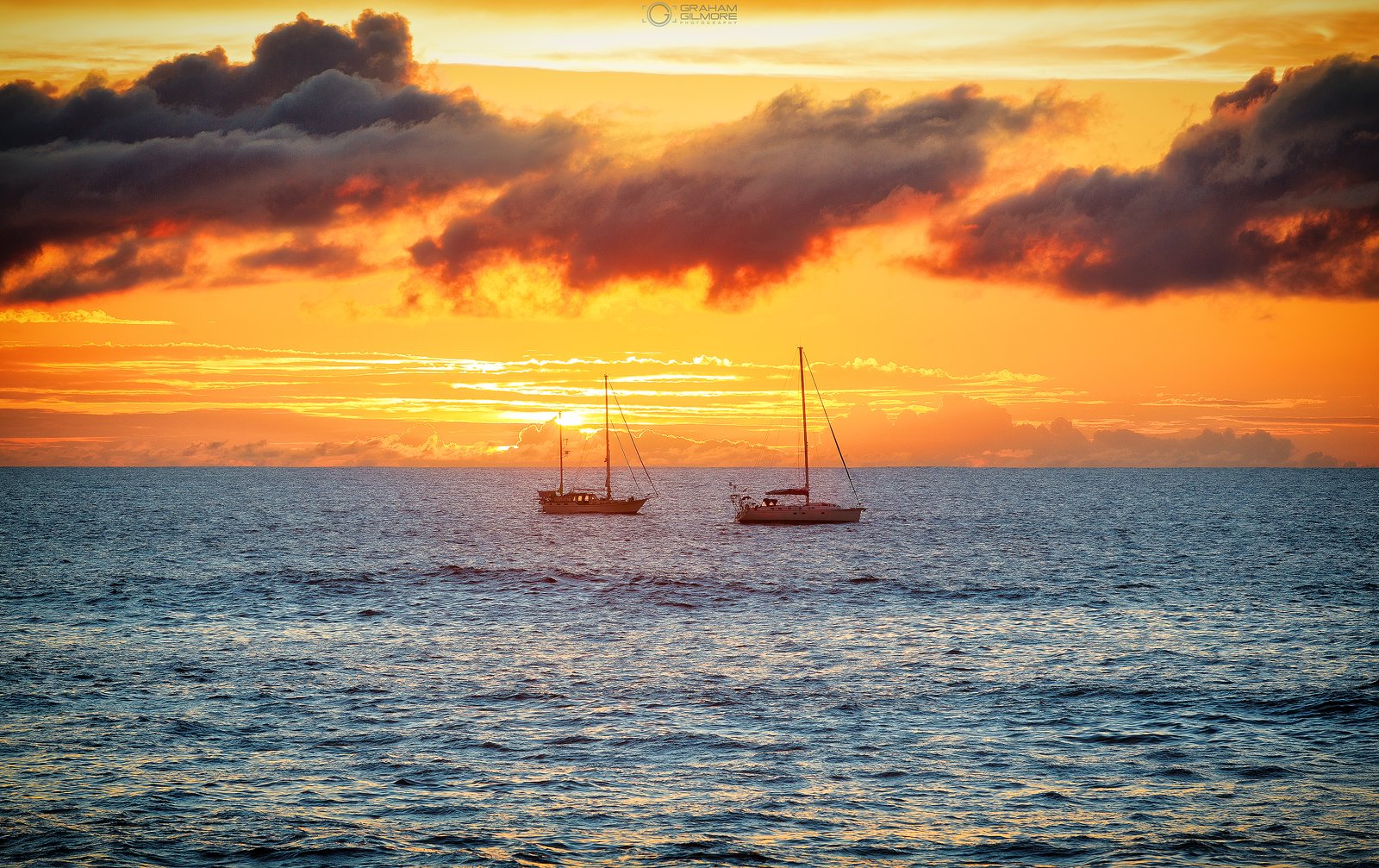Easter Island Part 3
My third day on Easter Island I packed my gear and headed out before dawn for Ahu Tongariki to catch the sunrise, when I got there the sky was just starting to light up and I was surprised to find a local guarding the entrance and asking to see my park pass before I could enter. Note to anyone who visits the island, if you want to head to this location for a sunrise then you'll need your park pass just for the sunrise, any other time it is open and unmanned. Unaware of this as I hadn't brought mine and unperturbed I moved on and aimed to go back there the following day. So, instead I headed over to Anakena beach for the remainder of the morning light. While my forgetfulness made me just narrowly miss the peachy skies of the early dawn, all was not lost as I was greeted by a completely empty beach right as the sun started to light up the palm trees. To my delight there was absolutely nobody around which, as a landscape photographer was very welcoming, but there were more surprises to come...

Symbolically this is one of the most important Ahu locations on the island. According to tradition, Anakena was the landing place of the Polynesian chief Hotu Matu'a who led the first settlement party here. Archaeologists have found human traces that go back as early as 1200CE. Other analysis has suggested that the first settlements could have been up to 800 years earlier. Anakena was also a main village for the western clans of the island and would also be part of the celebrations if a western clan leader won the Tangata Manu (Birdman Cult) that year. It is also worth noting that settlers came to this island at roughly the same time as settlers arrived in Hawaii. When the tribal wars broke out and the Moai were toppled the sand covered them and protected them from erosion, because of this there is lots of fine detail to be seen on these Moai, though they are not the largest on the island they are some of the best preserved. The Ahu Nau Nau (pictured below) was re erected in 1978 by local archaeologist Sergio Rapu and his team.
 I unloaded my camera equipment from the car and headed over to the two Ahu in this location - Ahu Nau Nau and Ahu Ature Huki. It was a beautiful morning out there, so peaceful with only the sound of the soft waves lapping on the shore I setup and started taking photos. I wasn't there for long when once again I heard galloping behind me, I turned around to witness a team approximately 20 wild horses come running over the hill behind me. They all stopped to graze around me as I was taking photos, if I was very quiet and moved slowly they would not get scared and bolt. So.. for almost 2 hours it was just me and my camera, the Moai and the horses on this beautiful beach, it really doesn't get any better than that. Again, a totally unique experience and the timing was everything, had it not been that I forgotten my park pass for the other area, I would have missed this completely, I came back another morning and there were a few other people on the beach and the horses had all moved on. Its moments like this that I find most rewarding in photography. In this millennium everyone takes pictures on some device or another, so to be in that specific place at that specific time with no one else around and to have all them wild horses comfortably share the beach with me, I have captured some images and had a very unique experience that very few people ever will.
I unloaded my camera equipment from the car and headed over to the two Ahu in this location - Ahu Nau Nau and Ahu Ature Huki. It was a beautiful morning out there, so peaceful with only the sound of the soft waves lapping on the shore I setup and started taking photos. I wasn't there for long when once again I heard galloping behind me, I turned around to witness a team approximately 20 wild horses come running over the hill behind me. They all stopped to graze around me as I was taking photos, if I was very quiet and moved slowly they would not get scared and bolt. So.. for almost 2 hours it was just me and my camera, the Moai and the horses on this beautiful beach, it really doesn't get any better than that. Again, a totally unique experience and the timing was everything, had it not been that I forgotten my park pass for the other area, I would have missed this completely, I came back another morning and there were a few other people on the beach and the horses had all moved on. Its moments like this that I find most rewarding in photography. In this millennium everyone takes pictures on some device or another, so to be in that specific place at that specific time with no one else around and to have all them wild horses comfortably share the beach with me, I have captured some images and had a very unique experience that very few people ever will.
Please click on the thumbnails below to see more from Anekena Beach.
[Best_Wordpress_Gallery id="10" gal_title="Rapa Nui - Anakena Beach"]
After finishing up in Anakena I decided to head back over to Ahu Tongariki and explore. This site comprises of 15 Moai which are on the south coast of the island and was the main center and capital of Hotu Iti, the eastern confederation of Rapa Nui. All of the Moai you see here were toppled in the islands civil wars, and in 1960 they were all washed inland by a tsunami that resulted from an earthquake off the coast of Chile. In the 1990's the Chilean government working with archaeologists from the university of Chile resurrected these statues which include one of the heaviest ever erected weighing in at 86 tonnes. All of the Moai here face sunset during the summer solstice.
Please click on the thumbnails below for more photos from Ahu Tongariki and surrounding areas.
[Best_Wordpress_Gallery id="11" gal_title="Rapa Nui - Tongariki"]
That evening I was treated to another beautiful sunset...

Please also feel free to share this page on Facebook and twitter using the links provided, thank you!